How Much is an Email List Worth?
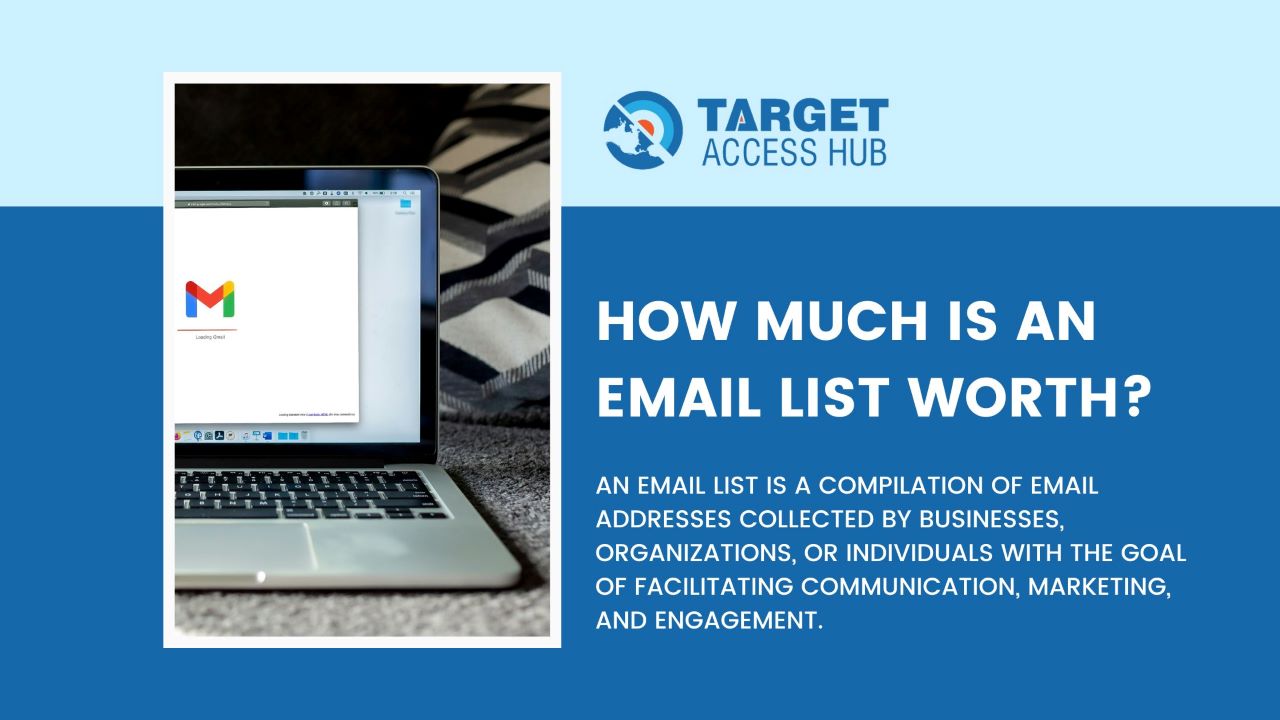
An email list is a compilation of email addresses collected by businesses, organizations, or individuals with the goal of facilitating communication, marketing, and engagement. These lists often include customers, potential customers, or individuals interested in receiving updates and information from the organization.
The core value of an email list lies in its ability to establish a direct line of communication with an audience, thereby promoting products or services, and nurturing long-term relationships. Unlike social media followers or website visitors, subscribers on an email list have opted in to receive communications, which usually means they have a genuine interest in what you have to offer.
Key Takeaways
The Importance of an Email List
Email lists are crucial assets for businesses for several reasons. First, they provide a direct and personal way to reach customers. Unlike social media platforms, where algorithms can limit the visibility of your posts, emails land directly in your subscribers’ inboxes. This access ensures that your message has a higher chance of being seen.
Additionally, the opt-in nature of email lists means that recipients are more likely to be interested in your content, making them more engaged and responsive. This makes email marketing one of the most effective forms of direct marketing, capable of driving conversions and increasing brand loyalty. Furthermore, emails can be tailored and personalized, leading to more meaningful interactions with your audience.
Advantages of a Quality Email List
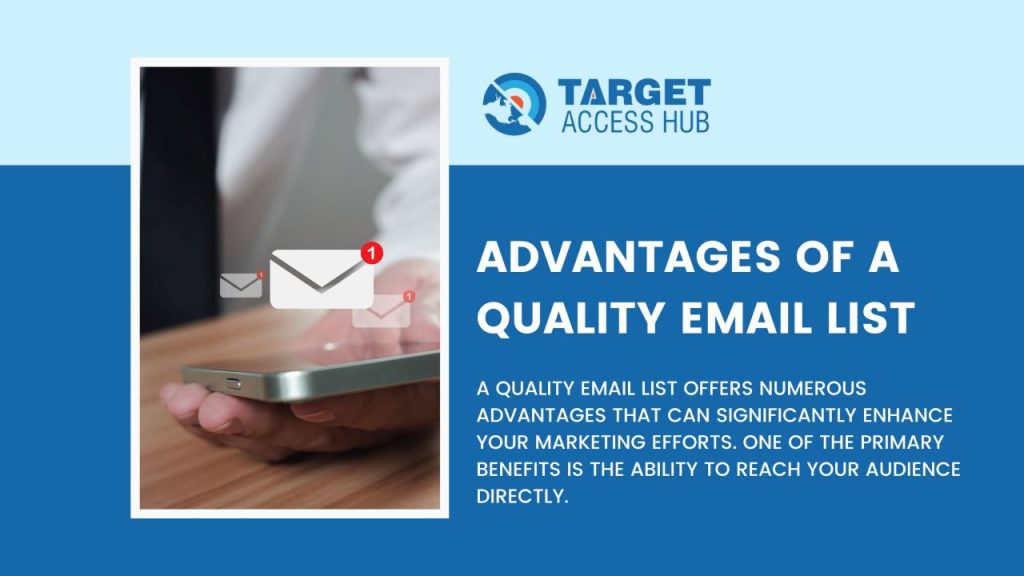
A quality email list offers numerous advantages that can significantly enhance your marketing efforts. One of the primary benefits is the ability to reach your audience directly. Unlike social media or search engine marketing, where your message can get lost in the noise, emails go straight to your subscribers’ inboxes, ensuring a higher probability of being read.
This direct access often translates into higher engagement rates, as emails typically have higher open and click-through rates compared to social media posts. Personalization is another key advantage; you can tailor your messages based on subscriber preferences and behaviors, making your communications more relevant and effective.
Additionally, email marketing is cost-effective, often yielding a higher return on investment compared to other forms of advertising. Finally, the performance of email campaigns is easily measurable, allowing you to track metrics such as open rates, click-through rates, and conversion rates to optimize future campaigns.
Why a High-Quality Email List Matters
The quality of your email list is paramount to the success of your email marketing efforts. A high-quality email list comprises subscribers who are genuinely interested in your content or products, leading to higher engagement rates and better deliverability. This means your emails are more likely to be opened and acted upon, resulting in more successful marketing campaigns.
Conversely, a low-quality list can harm your email marketing efforts, causing high bounce rates, spam complaints, and a poor sender reputation. This not only affects your current campaign’s performance but can also impact your ability to reach your audience in the future, as email service providers might start flagging your emails as spam.
Therefore, maintaining a high-quality email list by regularly cleaning and updating it, and ensuring subscribers are genuinely interested in your offerings, is crucial for sustained email marketing success.
Key Benefits of an Email List
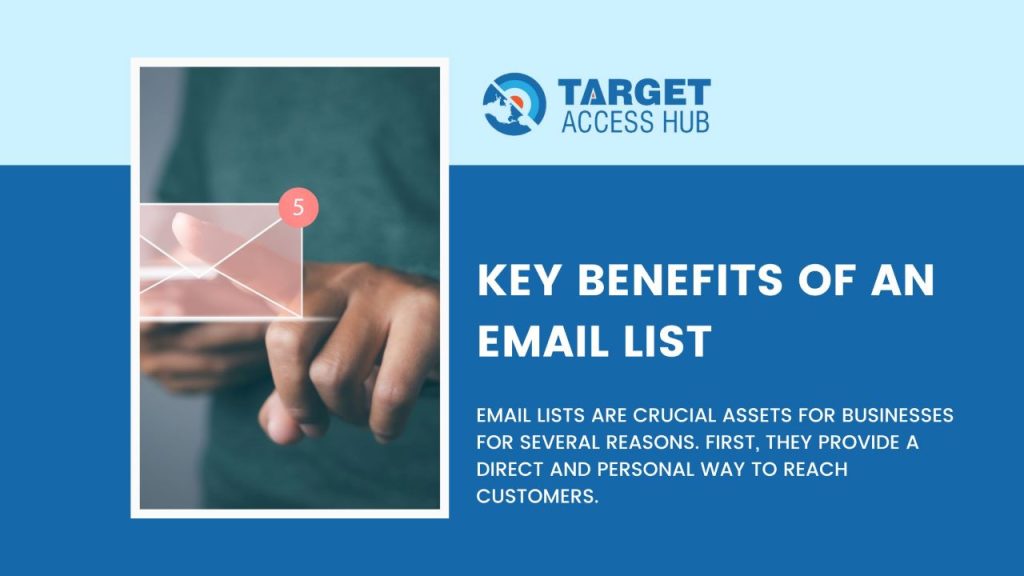
An email list offers several key benefits that can drive business growth and customer engagement. One of the most significant benefits is the potential for increased sales. By promoting products or services directly to a targeted audience, businesses can drive conversions and boost revenue. Regular communication through emails also helps in retaining customers by keeping them informed about new products, special offers, and company updates.
This consistent engagement fosters brand loyalty and keeps your brand at the forefront of customers’ minds. Additionally, email lists are an excellent tool for building brand awareness. Sending regular, valuable content helps to establish your brand’s presence and authority in your industry.
Emails also provide a platform for gathering valuable insights through surveys and feedback forms, helping you understand customer preferences and improve your offerings. Finally, email marketing automation allows you to streamline your campaigns, saving time and resources while ensuring consistent communication with your audience.
Factors Influencing Email List Value
Several factors influence the value of an email list, making it a critical consideration for businesses aiming to optimize their email marketing efforts. The size of the list is an obvious factor; a larger list can potentially reach more people, but it’s essential to note that quality often trumps quantity. An engaged and targeted smaller list can be more valuable than a larger list with low engagement rates.
Engagement rates themselves are a crucial determinant of list value; higher open and click-through rates indicate a more responsive and interested audience. The demographics of your list also play a significant role; lists that closely match your target market demographics are more likely to yield better results.
Additionally, the segmentation of your list can enhance its value. Well-segmented lists allow for more targeted and relevant messaging, which can improve engagement and conversion rates. The source of the list is also important; lists acquired organically through opt-in methods are generally more valuable than purchased lists.
Methods to Evaluate Your Email List’s Worth
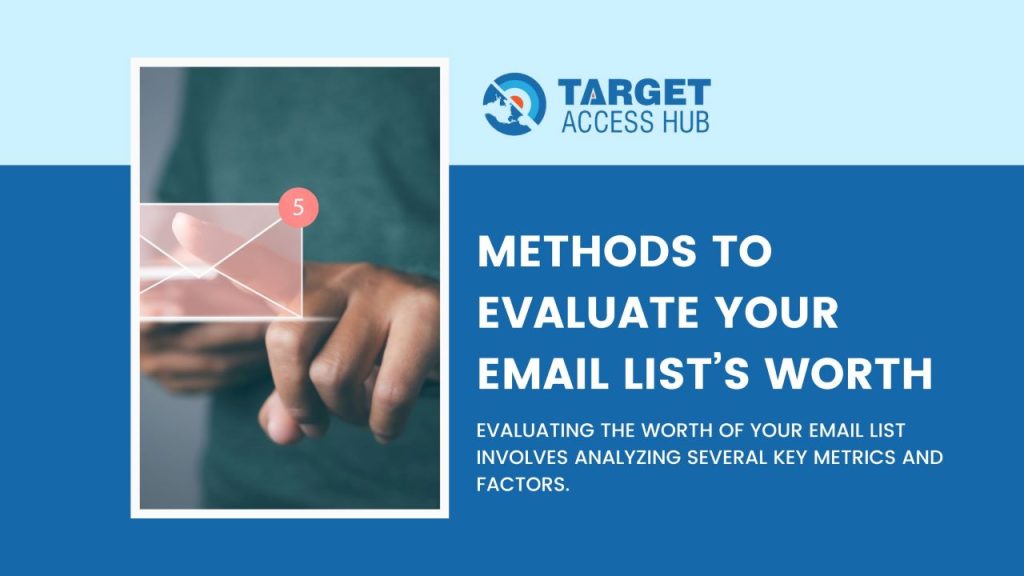
Evaluating the worth of your email list involves analyzing several key metrics and factors. First, consider the engagement rates. High open rates and click-through rates indicate that your audience is interested and engaged with your content, increasing the list’s value. Conversion rates are another critical metric; higher conversion rates suggest that your emails effectively drive desired actions, such as purchases or sign-ups.
The overall growth rate of your list also matters; a steadily growing list indicates a healthy and expanding audience base. The quality of the subscriber data, such as the accuracy and completeness of email addresses, also affects the list’s value.
Additionally, the revenue generated from email marketing campaigns can provide a direct measure of the list’s financial worth. By analyzing these metrics, you can gain insights into the performance and value of your email list, helping you make informed decisions about your email marketing strategies.
How Much Is an Email List Worth to Your Online Business?
The worth of an email list to your online business can be substantial, depending on various factors. A high-quality email list can drive significant revenue through direct promotions and sales. It can also enhance customer retention by keeping your audience engaged and informed about your offerings. Moreover, an email list allows you to build and nurture relationships with your customers, fostering brand loyalty and increasing lifetime customer value.
The ability to send personalized and targeted messages can result in higher conversion rates and improved marketing ROI. Additionally, an email list provides valuable data and insights that can inform your overall marketing strategy and help you better understand your audience.
Overall, the value of an email list lies in its potential to generate revenue, improve customer retention, and provide actionable insights. This makes it one of the most important assets for any online business.
Email List Acquisition and Providers
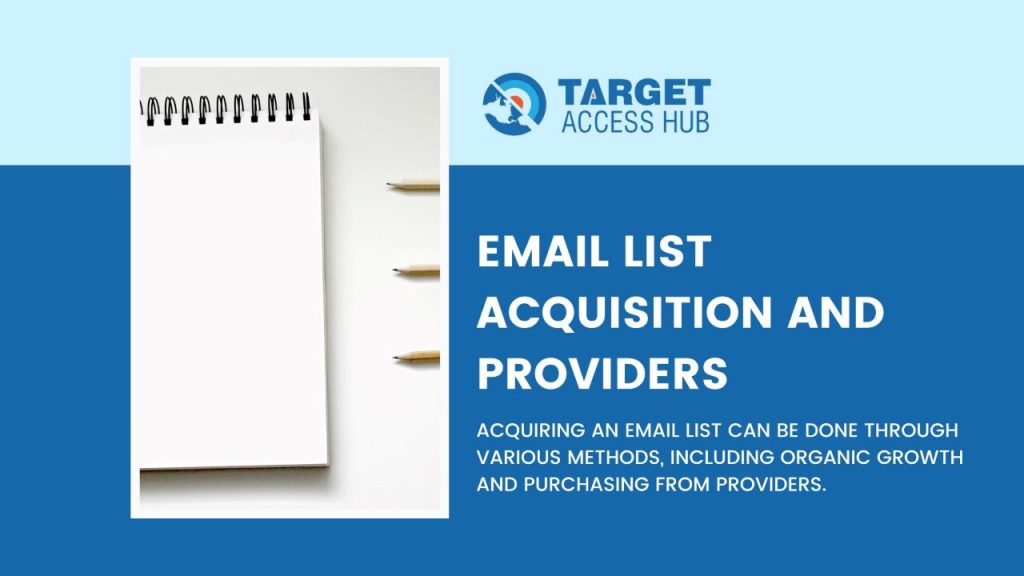
Acquiring an email list can be done through various methods, including organic growth and purchasing from providers. Organic growth involves collecting email addresses through opt-in forms on your website, social media channels, and during events or promotions. This method generally yields higher-quality lists, as subscribers have actively chosen to receive communications from you.
On the other hand, purchasing email lists involves buying pre-compiled lists from providers. While this can quickly increase your reach, it often results in lower engagement rates and higher chances of spam complaints, as the recipients may not have explicitly opted in to receive your emails.
Therefore, it is crucial to weigh the pros and cons of each method and consider factors such as list quality, engagement potential, and compliance with email marketing regulations when acquiring an email list.
Selecting the Right Email List Provider
Choosing the right email list provider is essential to ensure the quality and effectiveness of your email marketing campaigns. When selecting a provider, consider factors such as the quality of the lists they offer, including how the lists are compiled and whether they consist of opt-in subscribers.
Reputable providers should have transparent methods for collecting email addresses and be able to provide detailed information about their lists. Additionally, consider the provider’s reputation and reviews from other customers. A good provider should also offer segmentation options, allowing you to target specific demographics or interests within the list.
Compliance with email marketing regulations, such as GDPR and CAN-SPAM, is another critical factor to consider when selecting a provider. Finally, evaluate the provider’s pricing and the return on investment they can deliver. By carefully selecting the right email list provider, you can enhance the effectiveness of your email marketing campaigns and achieve better results.
Pros and Cons of Purchasing an Email List
Purchasing an email list comes with its own set of advantages and disadvantages. One of the primary benefits is the ability to quickly expand your reach and audience base. This can be particularly useful for new businesses looking to grow their subscriber base rapidly. Additionally, purchased lists can help you target specific demographics or interests, depending on the provider’s segmentation options.
However, there are significant drawbacks to consider. Purchased lists often result in lower engagement rates, as the recipients may not have explicitly opted in to receive your emails. This can lead to higher bounce rates, spam complaints, and damage to your sender reputation. Moreover, the quality of purchased lists can vary, making it challenging to ensure that you are reaching a genuinely interested audience.
Compliance with email marketing regulations is another concern, as using purchased lists can sometimes lead to violations. Therefore, while purchasing an email list can offer quick growth, it is essential to weigh the pros and cons and consider the potential impact on your email marketing efforts.
![Ultimate Guide : Property Management Email Templates [2024]](https://targetaccesshub.com/wp-content/uploads/2024/02/maximizing-property-management-success-through-email-templates-768x432.webp)


